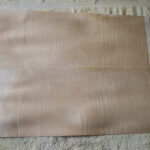Have you ever been jamming on your guitar and stumbled when someone asked, “What notes are in that C minor chord you’re playing?” If your mind draws a blank, you’re not alone. Many guitarists find learning all the notes in all the chords a daunting task. But what if we told you it’s not as hard as you think, and it’s actually crucial for taking your guitar playing to the next level?
Understanding the notes within your chords is more than just music theory trivia – it’s the key to unlocking deeper musicality and control on the guitar. Let’s explore why knowing “All The Chords On Guitar” is essential and how to make it a fun and achievable goal.
Why Knowing Your Guitar Chords Inside Out Matters
Knowing the notes in every guitar chord isn’t just about flexing your music theory muscles. It directly translates to tangible improvements in several key areas of your playing:
-
Elevate Your Guitar Solos with Chord Tone Targeting: Imagine improvising a solo that perfectly complements the chords underneath. Knowing the notes within each chord allows you to intentionally target those notes during your solos. This technique, known as chord tone soloing, creates melodies that resonate deeply with the harmony, making your improvisations sound more sophisticated and purposeful. While there are various approaches to chord tone soloing, they all become significantly easier and more effective when you have instant recall of the notes within each chord.
-
Craft Richer Chord Progressions and Voicings: When you’re composing music or writing songs, understanding chord notes opens up a world of creative possibilities. You can make informed decisions about chord voicings, especially when applying voice leading techniques. Voice leading, the art of smoothly transitioning between chords by minimizing movement between individual notes, becomes much more intuitive when you know the notes you’re working with. This leads to more elegant and professional-sounding chord progressions.
-
Become a More Versatile and Confident Guitarist: The more intimately you know your chords, the more comfortable and adaptable you become in any musical situation. Whether you’re jamming with other musicians, learning new songs, or writing your own material, chord knowledge empowers you. It’s a foundational skill that positively impacts virtually every aspect of your guitar playing, fostering a deeper understanding of music and your instrument.
Learn All The Chords On Guitar: A Simple 3-Step Method
Ready to dive in? Learning “all the chords on guitar” might seem overwhelming, but breaking it down into manageable steps makes it surprisingly accessible. Here’s a straightforward approach to get you started:
-
Master the Fundamentals: Finding Notes in Chords. Begin with the essential building blocks: major and minor triads. Forget about complex extended chords like add9 or #11 for now. If you’re unsure how to determine the notes within a chord, consider exploring resources like basic music theory guides specifically designed for guitarists. Understanding chord formulas and how they relate to scales is the first crucial step.
-
Create Your Chord Note Table. Systematically write out a table listing all major and minor triads and their constituent notes. This act of writing reinforces your learning. If creating your own table feels daunting, pre-made tables are readily available in many music theory resources, offering a convenient shortcut to this step.
-
Train Your Chord Note Recall. Implement a simple yet powerful recall exercise into your daily practice routine. This exercise, demonstrated in the video mentioned in the original article (and easily adaptable without the video), can be done anywhere, anytime – no guitar needed! For example, challenge yourself to instantly name the notes in a G minor triad (G, Bb, D). Regularly quizzing yourself like this, even for just a few minutes a day, dramatically improves your recall speed and accuracy.
Imagine you’re waiting for your coffee. Instead of scrolling through social media, mentally run through a few chord note recall exercises. Ask yourself: “What are the notes in an E major triad?” (E, G#, B). Or, “What about a D minor triad?” (D, F, A). These small moments of focused practice accumulate quickly.
Practicing with a friend is also a great way to make this exercise more engaging. Take turns asking each other to name the notes in different chords.
By consistently practicing this recall exercise, you’ll be amazed at how quickly you internalize the notes within major and minor triads. Once you have a solid grasp of these fundamental chords, expanding your knowledge to diminished, augmented, dominant, and extended chords becomes significantly easier.
Learning “all the chords on guitar” is not a mountain to be feared, but a series of small, achievable steps. Integrate this chord note recall exercise with a fretboard note memorization practice, and you’ll be well on your way to mastering your guitar and unlocking a deeper understanding of music. Have fun exploring the world of chords!


